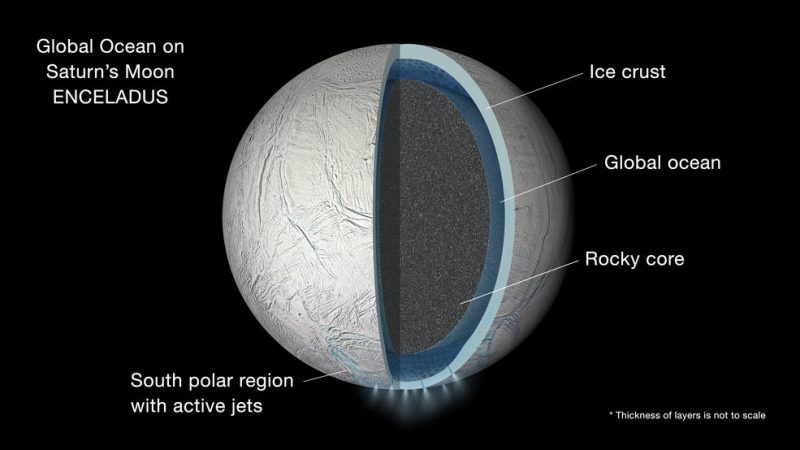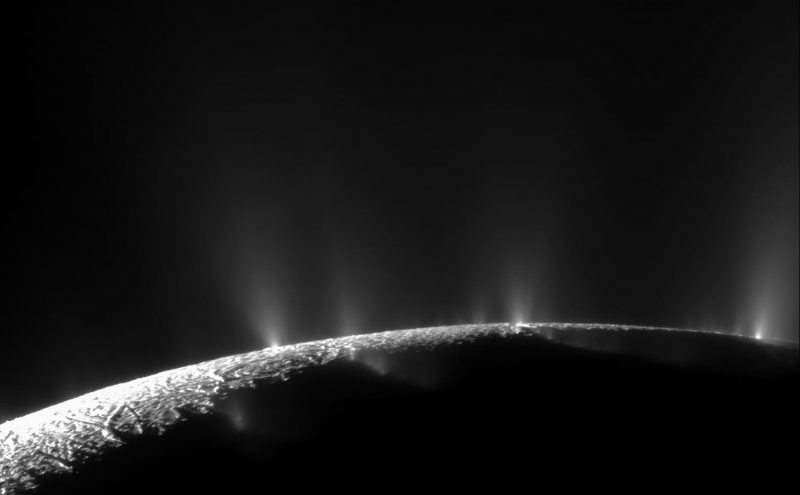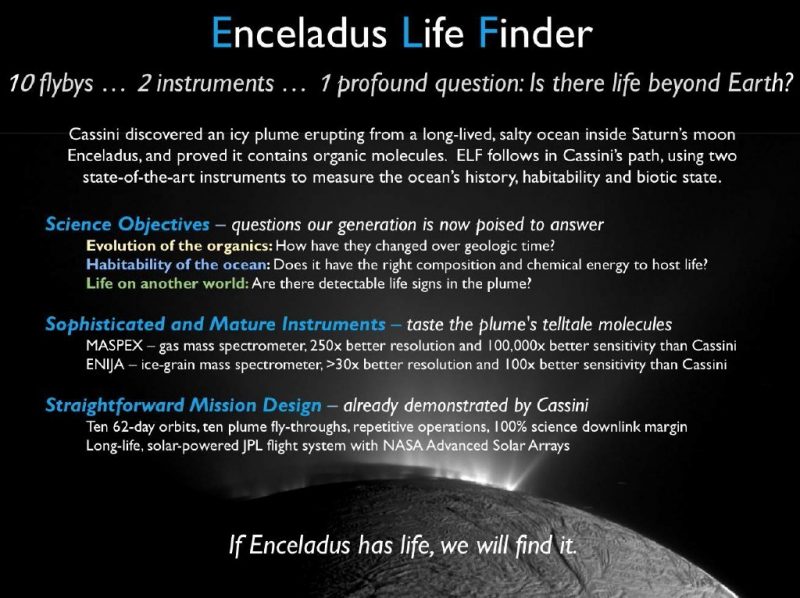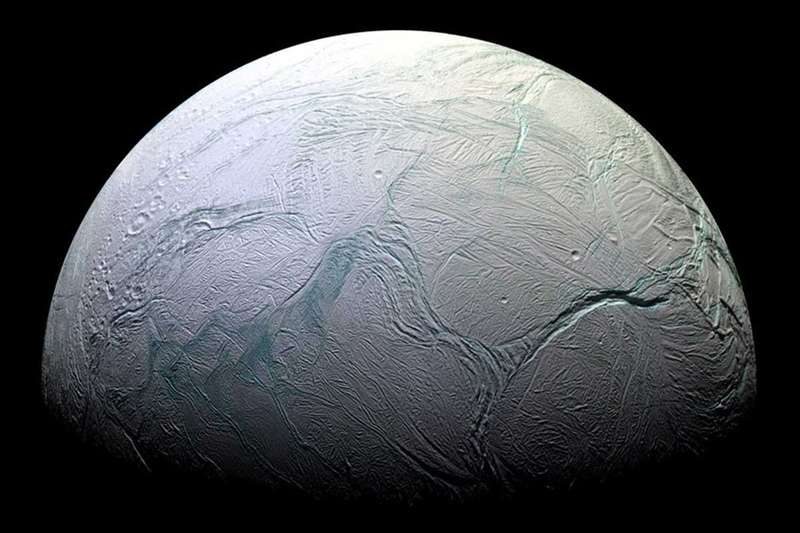
Saturn’s moon Enceladus is very small – only about 310 miles (500 kilometers) across – but it may hold clues to one of the biggest mysteries of all time – are we alone? Beneath the icy crust lies a global salty ocean, not too different from Earth’s oceans. Could that ocean contain life of some kind? That is a question that many scientists – and the public alike – would like to find an answer for. Enceladus, however, is very far away and planetary missions are expensive – but there may be an ideal solution.
Billionaire entrepreneur and physicist Yuri Milner wants to send a private mission back to this intriguing world, and NASA wants to help him. This incredible idea was first reported in New Scientist on November 8, 2018 (please note this article is behind a paywall). It was then reported by Gizmodo the same day.

As reported by Mark Harris in New Scientist:
Agreements signed by NASA and Milner’s non-profit Breakthrough Starshot foundation in September show that the organisations are working on scientific, technical and financial plans for the ambitious mission. NASA has committed over $70,000 to help produce a concept study for a flyby mission. The funds won’t be paid to Breakthrough but represent the agency’s own staffing costs on the project.

Breakthrough Initiatives, part of Milner’s non-profit Breakthrough Starshot Foundation, would lead and pay for the mission, with consultation from NASA. The board of Breakthrough Initiatives includes billionaires Yuri Milner and Mark Zuckerberg, and the late physicist Stephen Hawking. Breakthrough Initiatives has been studying various mission concepts for space exploration, including a solar sail to nearby stars, advancing the technology to discover other Earth-like planets and sending out a direct message, similar to the previous Arecibo message, specifically to try and catch the attention of aliens.
Enceladus has become a prime target in the search for extraterrestrial life in our solar system, since its subsurface ocean is thought to be quite similar to oceans on Earth, thanks to data from the Cassini mission, which orbited Saturn from 2004 until September of last year. Scientists already know it is salty and there is evidence for geothermal activity on the ocean floor, such as “smoker” volcanic vents on the bottom of oceans on Earth. Such geothermal vents – at least on Earth – are oases for a wide variety of ocean life despite the darkness and cold temperatures away from the vents.
Cassini also investigated the plumes of Enceladus – huge “geysers” of water vapor erupting through cracks in the surface at the south pole of Enceladus. Cassini flew right through some of them, analyzing their composition, and found they contain water vapor, ice particles, complex organic molecules and salts. Cassini wasn’t capable of finding life directly, but it did find valuable clues and hints that there may well be something alive in that alien ocean, even if only microbes.

Earlier this year, New Scientist also reported that there may already be some tentative evidence for microbes in Enceladus’s ocean. Cassini detected traces of methane in the water vapor plumes, and when scientists tested computer models of conditions in the ocean, they found that microbes that emit methane after combining hydrogen and carbon dioxide – called methanogens – could easily survive there. According to Chris McKay at NASA’s Ames Research Center in Moffett Field, California:
This [team] has taken the first step to showing experimentally that methanogens can indeed live in the conditions expected on Enceladus.
The scientists found that the microbes were able to thrive at temperatures and pressures likely found in Enceladus’s oceans, ranging from 0 to 90 degrees Celsius, and up to 50 Earth atmospheres. They also found that olivine minerals, thought to exist in the moon’s core, could be chemically broken down to produce enough hydrogen for methanogens to thrive.

Another proposed return mission to Enceladus is the Enceladus Life Finder (ELF), which would orbit Saturn and make repeated passes through the plumes – like Cassini, but with updated instruments that could even test whether any amino acids found have predominately left or right-handed structures. (Life on Earth predominately creates left-handed forms, and scientists think that life elsewhere will also favor one form over the other instead of a random mixture as would occur from abiotic chemistry.)
Cassini wasn’t designed to detect life directly, but on a future mission – such as the one proposed – a mass spectrometer would be able to detect carbon isotope ratios unique to living organisms, as well as other potential “biomarkers” of methanogens, including lipids and hydrocarbons.

Bottom line: Scientists are eager to return to Enceladus to learn more about its intriguing subsurface ocean. The new plan by billionaire Yuri Milner, with NASA’s assistance, may be the best bet to go back and see if anything is swimming in those mysterious alien waters.











